A fiery meteor blazed a trail through the skies on Friday morning, with sightings reported from Christchurch to Rotorua.
Zoe Battersby, out for an early walk along Jimmy Amers beach in Kaikoura at around 6.10am, said she couldn't help but notice it.
"It was very bright the size of a streetlight. It looked like it fell into the sea," she said.
Alan Gilmore, resident superintendent of the Canterbury University Mt
John Observatory, said meteors entered the atmosphere over New Zealand
"several times a year", but he doubted that the rock made it to the
ground or water level. "This meteor is very typical, and often they
burn up at about 70 kilometres up," he said.
"They are coming into a thicker atmosphere, travelling at 30km a second.
"The friction is strong and they slow up and start to break up.
"It's like throwing a stone at a concrete path."
Mr Gilmore said as meteors broke up, witnesses often saw a bright flash known as a "terminal fireball".
Meteors could be seen from as far as 1000km away and at a height of 100km.
"They are spectacular, often a bright white centre which is the
actual rock ... a tiny, brilliant star with a teardrop-shaped glow
that's brilliant emerald green caused by the oxygen and the radiation
coming off the rock."
Mr Gilmore said a sonic boom often heralded the rare occasion of a meteor landing.
He expected Friday's meteor entered the atmosphere somewhere over the North Island because of the range of reported sightings.
"The impression of closeness is deceptive.
"Because they are bright, people think [the meteorite] landed a couple of paddocks away."
An Irish astronomy group is calling for help in tracing the origin of a
huge explosion in the skies over the country on Thursday evening.
Astronomy Ireland said it was currently investigating the explosion, which occurred at 2100 BST.
A spokesman said the most likely explanation was a space rock or satellite crashing into the atmosphere.
The group wants anyone who witnessed the event to contact its website at www.astronomy.ie
Astronomy Ireland chairman David Moore said: "So far, reports
have been registered by residents in west Cork, Kerry, Cavan and as far
north as Donegal, thus suggesting that this spectacular event may have
been witnessed by people all over the country.
"In the past two decades there have been two major explosions in the skies over Ireland.
"When we investigated these, we were able to conclude that one
was a Russian military satellite that exploded over the country, and
the other was a rock from space which we predicted would have fallen on
Carlow and this rock was indeed found, becoming the last meteorite fall
of the millennium."
Mr Moore said the explosion should not be confused with a
hugely-bright star which was positioned just below the full moon on
Thursday night.
"This was actually the planet Jupiter and it can be
characterised by being by far the brightest star in the entire night
sky," he said.
The
man in the moon is humming a tune, but thankfully the noise won't drown
out sensors on future missions peeking at the lunar interior.
A steady barrage of small meteorite impacts should cause the
moon to "ring", but no seismometers sent to the moon to date have been
sensitive enough to hear it. So Philippe Lognonné at the Institute of
Earth Physics of Paris and colleagues decided to work out how loud the
ring is.
The team estimated the meteorite population in the solar
neighbourhood, and calculated the likely seismic signals that would be
created by a range of meteorite sizes and velocities as they strike the
moon.
Apollo calibration
To determine how the vibrations from these impacts would be seen by
seismometers, the team used data taken by Apollo seismometers four
decades ago. These measured the vibrations created by the landings of
lunar modules and spent rocket stages.
Since the precise locations and timing of these landings were
known, they could be used to gauge how long it would take vibrations
caused by meteorite impacts to travel through the moon, and how much
the signals might dim.
Their calculations revealed space rocks with masses ranging
from a gram to a kilogram do indeed create a hum, but it is subtle.
Earth's hum - created by pounding waves - is more than 1000 times
louder.
"This shows that all planets may hum, those with and those without atmosphere," says Lognonné.
It's oh so quiet
The moon-hum's quietness means future lunar seismometers should
be able to peek deep within the moon without the hum creating
problematic background noise, says Lognonné.
Instead seismometers can focus on measuring waves created by
moonquakes, tremors created by a variety of sources, including the
tidal tug of the Earth. Because seismic waves are sensitive to the
type, arrangement and density of rocks they pass through, studying the
quakes can reveal more about the moon's interior.
The network of seismometers left by the Apollo missions has
been shut down since 1977, so Lognonné hopes more sensitive instruments
will be sent to the moon soon. These could reach deeper than the Apollo
network to measure the size of the moon's core. "The area within 500
kilometres of the centre of the moon is complete unknown to
seismology," Lognonné says.
"I think [the study] is a great idea," says Clive Neal of the
University of Notre Dame in Indiana, who was not associated with the
research. "Estimating the actual background noise is critical for
designing the next generation of seismometers to go to the moon."
The first instrument may be a seismometer proposed for Japan's
Selene-2 moon mission, which aims to send a lander to the surface,
perhaps as early as 2015.
Journal of Geophysical Research (in press)
Kimberley Shearon
The Province
Sun, 13 Sep 2009 15:01 UTC
It wasn't a bird and it wasn't a plane. Was it a meteor?
Around 8 p.m. Saturday night a great, big ball of yellowy-white light streaked from east to west across the darkening sky.
Astronomer David Dodge said that the fireball was probably a meteor - basically a rock falling from space.
"It probably wasn't a piece of space junk. The reason why I saw that is
that it was going from east to west, and 99.9 per cent of space stuff
sent up there is not going east to west."
He said meteors fall to earth every day.
Most burn up before they enter the earth's atmosphere.
Saturday's meteor was notable only because it happened over a populated area Some eye-witnesses, however, had their doubts.
Steve Salsman, was out on his deck when he saw the white ball of light hurtling through the dusky night air.
"It was at about the height of an airplane and had a long red tail," he said.
When the fiery ball appeared to break up, Salsman said he automatically
thought that the it might be a dead satellite re-entering the earth's
atmosphere.
Another eye-witness, Miles Wishlow, also said he thought the fireball was space junk falling from the sky.
He saw a "shard" break off from the fireball.
"It looked like something man-made that was just way off-course."
The fireball itself, Wishlow said, didn't resemble anything he's seen then past.
"The shape wasn't a perfect circle," he said.
"It was so big and so low compared to the shooting stars and
other meteor showers. It was a lot closer than anything I've ever
seen."
Dodge said Saturday's meteor might have landed somewhere along
Vancouver Island's west coast or in the Pacific Ocean - if it landed at
all.
Space-enthusiasts, he said, would be hard-pressed to find a chunk of the meteor, even if it did make it to earth.
"It was something 100 km over its ground path travelling at 70 km per second," he said.
"The human eye has a tough time dealing with that and tends to go for the easy answer. It's not in our neighbour's backyard."
Dodge also pointed out that once a meteor lands on earth it is no more remarkable than a regular old rock.
The biggest difference is that space rocks get to go out in a blaze of glory.
"It was quite breathtaking. Four of us were just standing there watching it," said Wishlow.
Sue Kendall was at her Saturna Island home on the phone with her son in Vancouver when she saw the bright, fast-moving light.
"I said, 'Oh my goodness,' and he looked up and saw it too,"
she said. "Your brain takes a moment to process it....it was amazing."
Jupiter's
gravity well has been known to capture objects - evidenced by the
recent impact on the gas giant discovered by amateur astronomer Anthony
Wesley. But one object captured by Jupiter in the mid 1900's was later
able to escape from the planet's clutches.
Researchers have found comet 147P/Kushida-Muramatsu was captured as a
temporary moon of Jupiter, and remained trapped in an irregular orbit
for about twelve years. "Our results demonstrate some of the routes
taken by cometary bodies through interplanetary space that can allow
them either to enter or to escape situations where they are in orbit
around the planet Jupiter," said team member Dr. David Archer.
With this discovery, five such objects have now been
discovered where the phenomenon of temporary satellite capture (TSC)
has occurred, but this new research suggests it might happen more
frequently than was expected. Kushida-Muramatsu orbited Jupiter between
1949 and 1961, the third longest capture period of the five objects.
An international team led by Dr. Katsuhito Ohtsuka
modeled the trajectories of 18 "quasi-Hilda comets," objects with the
potential to go through a temporary satellite capture by Jupiter that
results in them either leaving or joining the "Hilda" group of objects
in the asteroid belt. Most of the cases of temporary capture were
flybys, where the comets did not complete a full orbit. However, the
research team used recent observations tracking Kushida-Muramatsu over
nine years to calculate hundreds of possible orbital paths for the
comet over the previous century. In all scenarios, Kushida-Muramatsu
completed two full revolutions of Jupiter.
"Asteroids
and comets can sometimes be distorted or fragmented by tidal effects
induced by the gravitational field of a capturing planet, or may even
impact with the planet," said Archer, as did comet D/1993 F2
(Shoemaker-Levy 9), which was torn apart on passing close to Jupiter
and whose fragments then collided with that planet in 1994. Previous
computational studies have shown that Shoemaker-Levy 9 may well have
been a quasi-Hilda comet before its capture by Jupiter. The object that
impacted with Jupiter this July, causing a new dark spot may also have
been a member of this class, even if it did not suffer tidal disruption
like Shoemaker-Levy.
"Our work has become very topical again with the discovery
this July of an expanding debris plume, created by the dust from the
colliding object, which is the evident signature of an impact. The
results of our study suggest that impacts on Jupiter and temporary
satellite capture events may happen more frequently than we previously
expected," said Asher.
The team has also confirmed a future moon of Jupiter. Comet
111P/Helin-Roman-Crockett, which has already orbited Jupiter three
times between 1967 and 1985, is due to complete six laps of the giant
planet between 2068 and 2086.
"Fortunately for us Jupiter, as the most massive planet with
the greatest gravity, sucks objects towards it more readily than other
planets and we expect to observe large impacts there more often than on
Earth. Comet Kushida-Muramatsu has escaped from the giant planet and
will avoid the fate of Shoemaker-Levy 9 for the foreseeable future,"
said Asher.
The discovery is to be presented at the European Planetary Science Congress in Potsdam.

© Donald E. Davis
This
painting depicts an asteroid slamming into tropical, shallow seas of
the Yucatan Peninsula in what is today southeast Mexico. The aftermath
of this immense asteroid collision, which occurred approximately 65
million years ago, is believed to have caused the extinction of the
dinosaurs and many other species on Earth.
This
painting depicts an asteroid slamming into tropical, shallow seas of
the Yucatan Peninsula in what is today southeast Mexico. The aftermath
of this immense asteroid collision, which occurred approximately 65
million years ago, is believed to have caused the extinction of the
dinosaurs and many other species on Earth.
New
studies of mixotrophic algae have shown how such organisms could
survive the darkened skies that follow a major asteroid impact. Such
studies indicate how life manages to survive after a mass extinction
event.
A dinosaur-killing asteroid may have wiped out much of life on Earth 65
million years ago, but now scientists have discovered how smaller
organisms might have survived in the darkness following such a
catastrophic impact.
Survival may have depended upon jack-of-all-trades organisms
called mixotrophs that can consume organic matter in the absence of
sunlight. That would have proved crucial during the long months of dust
and debris blotting out the sun, when plenty of dead or dying organic
matter filled the Earth's oceans and lakes.
"Mixotrophs are very good at stabilizing situations by using
whatever resources are there, and can often provide what resources
there aren't," said Harriet Jones, a biologist at the University of
East Anglia in the UK. "They're very good at coping in extreme
environments, and enabling other organisms to live."
Jones and her colleagues tested the limits of
mixotrophs by subjecting them to six months of low light or complete
darkness. The mixotrophs not only thrived, but also surprised
researchers by helping sunlight-dependent organisms also survive pitch
black conditions.
Simulating catastrophe
Scientists have long debated the overall impact of the K-T
extinction that may have heralded the end of the dinosaurs, but most
researchers agree that such an event would have thrown up enough dust
and debris to darken Earth's skies for about six months. A lack of
sunlight would have killed off a majority of plants, eliminating the
food supply for animals higher up the food chain.
Many scientists assumed that even smaller organisms would
struggle just to stay alive during months of almost complete darkness.
Some previous studies even looked at how some organisms such as
mixotrophs can survive low light and low food conditions. But no one
had tried to test how well mixotrophs would survive the catastrophic
environment following something such as the K-T event, Jones said.
"The literature was always saying in that biological
production would cease in a post-catastrophic environment," Jones
noted. "We felt that because of what mixotrophy algae could do, that
wasn't always the case."
Jones joined forces with Charles Cockell, a microbiologist at
the Open University based in the UK who specializes in catastrophic
environments, as well as other researchers. They tested both freshwater
and ocean mixotrophs under conditions ranging from low light to
complete darkness for six months, and added food sources during
short-term experiments to simulate decaying organic matter.
However, Jones and her colleagues also wanted to see how
mixotrophs fared when living together with phototrophs, or
light-dependent organisms. They tested mixotrophs and phototrophs
separately and together under the different light conditions.
Live together or die alone
Turns out that the mixotrophs survived all the experiments, and
some even grew under the low light conditions. Their ability to consume
other organisms or organic matter helped them rebound quickly after low
light returned, perhaps similar to the clouds of dust and debris
finally beginning to clear.
But the real shock came from how well light-dependent
organisms did when living with the mixotrophs. No photosynthesis could
take place under the complete darkness, but the phototrophs mostly
managed to survive based on nutrients cycled by the active mixotrophs.
"We were extremely surprised at how well phototrophs did
during six months darkness, when they can't eat at all," Jones said.
Such findings may cause researchers to rethink how well certain life
forms survived the catastrophic impacts that dot Earth's geological
record.
Furthermore, the mixotroph activity allowed the phototroph
populations to rebound quickly back to normal within a month. And in
the end, both mixotrophs and phototrophs tended to fare better when
living together.
"So long as mixotrophs are cycling nutrients, [phototroph]
algae can take off quickly and get the life cycle going," Jones
explained.
Life lessons for survival
Only one low light condition saw phototrophs fail to survive
while living with mixotrophs. The phototrophs may have used too much
energy trying to do photosynthesis in the weak light, or perhaps the
hungry mixotrophs simply fed on their fellow organisms.
"You can only do so much in a flask, and obviously the mix of
species would be much greater in a natural environment," Jones pointed
out.
Still, the overall results suggest how mixotrophs provide a
cushion against catastrophe for certain ecosystems, and may even
prevent huge population crashes. The research is further detailed in
the July/August issue of the journal Astrobiology.
Jones and her colleagues plan to conduct more studies with greater
mixes of species, in an environment that would more closely resemble
the natural world. They also want to shorten experiments to three
months rather than six.
That looks all well and good for the smaller organisms. But
humans, who would have a much harder time feeding themselves if the
skies went dark, may want to plan on how to prevent such catastrophic
asteroid impacts in the future.
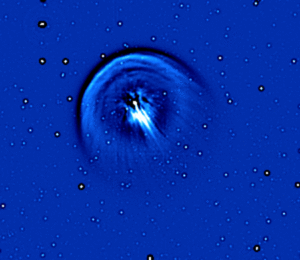
© Jewitt/Stevenson/Kleyna
Reveals the expansion of the coma of comet Holmes over 9 nights in 2007 November.
Reveals the expansion of the coma of comet Holmes over 9 nights in 2007 November.
Astronomers
from the University of California, Los Angeles and the University of
Hawaii have discovered multiple fragments ejected during the largest
cometary outburst ever witnessed. Images and animations showing
fragments rapidly flying away from the nucleus of comet 17P/Holmes will
be presented by Rachel Stevenson at the European Planetary Science
Congress in Potsdam, Germany, on Wednesday 16 September.
Stevenson, together with colleagues Jan Kleyna and David
Jewitt, began observing comet Holmes in October 2007 soon after it was
reported that the small (3.6 km wide) body had brightened by a million
times in less than a day. They continued observing for several weeks
after the outburst using the Canada- France- Hawaii Telescope in Hawaii
and watched as the dust cloud ejected by the comet grew to be larger
than the Sun.
The astronomers examined a sequence of images taken over nine
nights in November 2007 using a digital filter that enhances sharp
discontinuities within images. The filter, called a Laplacian filter,
is particularly good at picking out faint small-scale features that
would otherwise remain undetected against the bright background of the
expanding comet. They found numerous small objects that moved radially
away from the nucleus at speeds up to 125 metres per second (280 mph).
These objects were too bright to simply be bare rocks, but instead were
more like mini-comets creating their own dust clouds as the ice
sublimated from their surfaces.
"Initially we thought this comet was unique simply
because of the scale of the outburst," said Stevenson. "But we soon
realized that the aftermath of the outburst showed unusual features,
such as these fast-moving fragments, that have not been detected around
other comets."
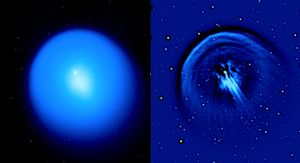
© Jewitt, Stevenson, Kleyna
Image
of comet Holmes from the 3.6-meter Canada-France-Hawaii telescope on
Mauna Kea showing the large expanding dust coma. On the left, a 'raw'
image is shown, in which the brightness reflects the distribution of
dust in the coma of the comet (the nucleus is in the bright, point-like
region to the upper left of center). On the right is shown the same
image after application of the Laplacian spatial filter, to emphasize
fine structures. The white/black circular objects are background stars
enhanced by the Laplacian filter.
Image
of comet Holmes from the 3.6-meter Canada-France-Hawaii telescope on
Mauna Kea showing the large expanding dust coma. On the left, a 'raw'
image is shown, in which the brightness reflects the distribution of
dust in the coma of the comet (the nucleus is in the bright, point-like
region to the upper left of center). On the right is shown the same
image after application of the Laplacian spatial filter, to emphasize
fine structures. The white/black circular objects are background stars
enhanced by the Laplacian filter.
While cometary
outbursts are common, their causes are unknown. One possibility is that
internal pressure built up as the comet moved closer to the Sun and
sub-surface ices evaporated.
The pressure eventually became too great and part of the
surface broke away, releasing a huge cloud of dust and gas, as well as
larger fragments.
Surprisingly, the solid nucleus of comet Holmes survived the
outburst and continued on its orbit, seemingly unperturbed. Holmes
takes approximately 6 years to circle the Sun, and travels between the
inner edge of the asteroid belt to beyond Jupiter. The comet is now
moving away from the Sun but will return to its closest approach to the
Sun in 2014, when astronomers will examine it for signs of further
outbursts.
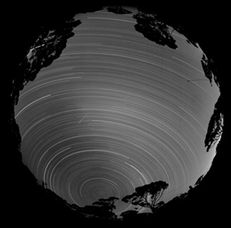
© Desert Fireball Network, funding from STFC and the EU
This
all-sky image was taken by the Desert Fireball Network in Western
Australia with a fish-eye lens. The film is exposed for most of the
night, so stars trace long curves; the white streak diagonally across
them is a firebal
This
all-sky image was taken by the Desert Fireball Network in Western
Australia with a fish-eye lens. The film is exposed for most of the
night, so stars trace long curves; the white streak diagonally across
them is a firebal
A rare meteorite that may have been
born in Earth's neighbourhood has been found using a new 'fireball'
observatory in Australia.
Scientists can learn how the solar system formed by studying
meteorites that originated in different places within it. The trouble
is, they don't know where the vast majority of meteorites actually came
from.
"Trying to interpret what happened in the early solar system
without knowing where meteorites are from is like trying to interpret
the geology of Britain from random rocks dumped in your back yard," says Phil Bland at Imperial College London.
To remedy that, Bland's team set up the Desert Fireball Network
in Western Australia's Nullarbor Desert in 2006. This trial network,
currently with four robotic cameras spread over roughly 250,000 square
kilometres, exposes photographic film to clear skies throughout the
night.
If the cameras record a bright meteor, or fireball, as
a rock falls through Earth's atmosphere, scientists can calculate its
trajectory by triangulation, estimate the rock's likely landing site, then look for it.
Small parent
Following the network's first observation of a fireball on 20 July
2007, search parties found three fragments of the resulting meteorite,
named Bunburra Rockhole, in 2008 and 2009.
The meteorite is made of basalt, the most common type of
solidified lava on Earth. Scientists typically assume that basaltic
meteorites are chips off the giant asteroid.
But Vesta is so large - roughly 530 kilometres across - that gravity
caused its component materials to settle into different layers soon
after its formation. The compounds in this meteorite, by contrast, are
better mixed, suggesting it came from a smaller asteroid a few tens of
kilometres wide.
Molten rock
Orbital calculations suggest this parent asteroid orbited in
the innermost side of the asteroid belt between Mars and Jupiter until
a collision chipped Bunburra Rockhole off the asteroid around 10 or 20
million years ago.
But though its parent body once orbited inside the asteroid belt, it may have been born closer to the sun. A theory proposed in 2006
argues that molten rock swirled around the young sun only in the
current region of Venus, Earth and Mars, with many molten blobs
subsequently flung out to the innermost asteroid belt.
In that case, Bunburra Rockhole could represent the type of
material that clumped together to build Earth. "Our big question is -
what were the building blocks for the terrestrial planets?" says Bland.
"This rock gets us a little bit closer to that."
Journal reference: Science (DOI: 10.1126/science.1174787)
Helen Altonn
Honolulu Star Bulletin
Thu, 17 Sep 2009 01:03 UTC
Astronomers
who were dazzled by the 2007 explosion of a comet into the largest
object in the solar system have discovered it gave birth to a bunch of
baby comets.
Reporting the "largest comet birth ever seen" were David
Jewitt, Rachel Stevenson and Jan Kleyna, who observed the event through
a Mauna Kea telescope.
Jewitt, a professor, and Stevenson, his graduate student, left
the University of Hawaii Institute for Astronomy this summer to join
the University of California, Los Angeles. Kleyna is an astrobiology
postdoctoral researcher at the institute.
They and others on an institute team observed the
spectacular outburst of Comet 17P/Holmes in October and November 2007
from the Canada-France-Hawaii Telescope on Mauna Kea.
The normally obscure comet burst from a tiny nucleus of ice
and rock into an object larger than the sun. The astronomers measured
the mass of ejected dust at 900,000 miles across. The diameter of the
sun, by comparison, is 865,000 miles.
"It was quite an event," Kleyna said in an interview
yesterday. "We got some very high-quality data with a very large camera
on the CFH Telescope."
He said the astronomers digitally enhanced the images and
"over several nights found these bright spots" flying away from the
nucleus of the comet at speeds of up to 280 mph.
"We concluded these probably were pieces of icy substance expelled from Comet Holmes like mini-comets," he said.
If they were solid chunks of ice they would have been invisible
but they were bright with activity, creating their own dust clouds as
surface ice vaporized and transformed into gas, Kleyna said.
"There have been some fragmented comets," Kleyna said, "but I
don't think we've seen an eruption that generated many comets before."
"Initially, we thought this comet was unique simply because of
the scale of the outburst," Stevenson said in a statement. "But we soon
realized that the aftermath of the outburst showed unusual features,
such as these fast-moving fragments that have not been detected around
other comets."
The team continued observing for several weeks. Jewitt, in a Star-Bulletin
interview in 2007, said the comet was expanding at about 1,100 mph and
was "an unprecedented million times brighter" than before.
What the astronomers saw was "just awesome," Jewitt said, and "very, very weird. An outburst by a factor of a million is staggering, and I don't know of a previous case like this," he said as he and his team studied the expanding comet.
Sightings of the baby comets were reported at the European Planetary Science Congress this week in Potsdam, Germany.
Comet Holmes was discovered in an outburst in November 1892,
then again in January 1893, probably when the comet was at its closest
to the sun, Jewitt said in 2007.
It takes Comet Holmes about six years to circle the sun,
traveling between the inner edge of the asteroid belt to beyond
Jupiter. Its next closest approach to the sun will be in 2014.
Kleyna said the astronomers are still analyzing data from the
2007 observations. "There are other interesting details of the comet
we're looking at."
One
of the world's most famous asteroid craters, the Chicxulub crater, has
been the subject of research for about twenty years. The asteroid
impact that formed it probably put an end to the dinosaurs and helped
mammals to flourish.
Together with an Anglo-American team, an ETH Zurich researcher has
studied the most recent deposits that filled the crater. The results
provide accurate dating of the limestones and a valuable basis for
archaeologists to research the Maya.
The discovery of the Chicxulub asteroid crater was detective
work: in 1980, based on iridium anomalies in clay sediments - which
could only be formed extraterrestrially - the American physicist Walter
Alvarez postulated a devastating asteroid impact at the transition from
the Cretaceous to the Paleogene around 65 million years ago.
Another ten years passed before the associated crater
was discovered on the Yucatan peninsula. Research work since then has
focused mainly on the structure of the crater, which has been buried in
a layer of sediment up to two kilometres thick since its formation and
which can only be studied using boreholes or geophysical methods.
Little is known about the sediments close to the surface. Most of the
geological maps also originate from the time before the Chicxulub
crater was discovered, and do not completely reflect the geology.
Crater ring as a geological boundary
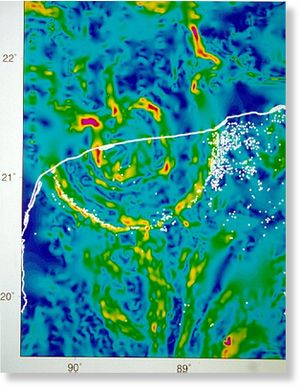
© Geological Survey of Canada
Chicxulub crater gravity map - white dots represent the locations of water-filled sinkholes
Chicxulub crater gravity map - white dots represent the locations of water-filled sinkholes
Together
with American and English researchers, Adrian Gilli, Senior Lecturer at
the Geological Institute of ETH Zurich, has now filled in a few of the
gaps in the knowledge about the near-surface rock deposits. Gilli says,
"The crater ring of the Chicxulub crater is scarcely recognisable in
the terrain." This is despite the fact that it is distinctly different,
geo-morphologically speaking, from the crater interior: the ring, which
is about five kilometres wide and has a radius of approximately 90
kilometres around the port of Chicxulub, is criss-crossed by fractures
that also occur frequently outside the crater ring.
The limestone along these faults has been riddled with holes and eroded
by rain and groundwater. A process known as karstification has to date
created about 3000 circular collapses forming small basins filled with
groundwater. The Maya called these basins "d'zonot", or "cenotes",
regarding them as a direct connection to the underworld and using such
places as sacrificial sites.
Crater sediments distinctly younger
Previously, the rocks outside the crater ring were suspected to
be older than those inside, but now researchers have for the first time
been able to determine their precise age using a method based on the
isotope ratios of strontium 87 to strontium 86 in the limestone, thus
confirming their suspicions.
The rock samples inside the ring gave an age of between 2.3 and 6
million years. On the other hand, the rocks outside the ring showed
more variable strontium isotope ratios and are from 10 to 33 million
years old. Gilli suspects that the crater basin had been covered by
seawater for a prolonged time, which allowed the more recent sediments
to be deposited there.
The results help to understand the geology better and to
re-draw and refine the outdated maps. Archaeology research can also
benefit from the geologists' work: for example, the life of the Maya,
whose important settlements Mayapán and Chichén Itzá are located in
these two geologically different regions, can be better researched on
the basis of the strontium data.
Gilli explains, "We really wanted to carry out a purely
geo-archaeological study in which, initially, the crater played no part
at all." The aim was to refine an earlier strontium isotopes study of
the rocks around the former Maya sites by adding 72 new samples to
enable the identification of small-scale variations in the isotope
ratio. This is because the transitions between regions with a different
ratio of strontium 87 to strontium 86 can be particularly important:
Gilli says, enthusiastically, "We can obtain a very large amount of
information about the lifestyle of the people from settlements at such
boundaries, such as the Maya city of Mayapán."
Geology and archaeology complement each other
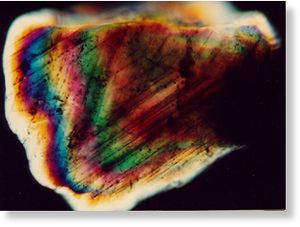
© Geological Survey of Canada
Shocked quartz grains produced by the impact (intracrater breccia sample Y6 N14 of the Chicxulub crater)
Shocked quartz grains produced by the impact (intracrater breccia sample Y6 N14 of the Chicxulub crater)
For
instance, the fine-mesh geological measurement network in conjunction
with the biological strontium isotope values makes migration movements
visible. It could yield knowledge about where the Maya obtained their
building materials or where they cultivated their maize.
This is because the weathering of rocks carries strontium into the soil
and from there into plants. When eaten by humans or animals in food,
strontium instead of calcium is incorporated into teeth when they are
formed in childhood. If detailed strontium isotopes maps are available,
this enables the region in which a person grew up to be determined.
Gilli says, "It gets particularly exciting if the origin of the rulers
of the various Maya towns can be determined. This in turn allows
conclusions to be drawn about the social structures of the Maya."
The scientist is convinced that the geological analyses of the
strontium isotope ratios form an important basis for the work of the
archaeologists, who are working ever more frequently with the
biological strontium isotopes from bones or teeth.
Chicxulub asteroid crater
The asteroid with a diameter of about ten kilometres that
created the Chicxulub crater most probably caused the worldwide
extinction of species at the boundary between the Cretaceous and the
Palaeogene. The event caused the extinction of about 75 percent of all
species.
Its effect was due mainly to the fact that it impacted into rocks rich
in carbonate and anhydrite. This hurled massive amounts of carbon
dioxide (CO2) and sulphur dioxide (SO2) into the atmosphere. It is
estimated that between 200 and 3000 cubic kilometres of sediments
vaporised, releasing 35 to 700 million tons of sulphur and 10 billion
tons of CO2 into the atmosphere.
The ozone layer would probably have been destroyed within a very short
time, and there must have been complete darkness over the Earth for
months due to the dust in the atmosphere. This had serious short- and
long-term consequences for the climate and biosphere. The crater that
remains has a diameter of 180 kilometres and extends from the Yucatán
peninsula to the Gulf of Mexico.
Maya
The first evidence of the Maya in Central America can be traced
back to 3000 B.C. Over the course of history, their cultural centres
moved from the uplands to the lowlands and finally to the north of the
Yucatán. Chichén Itzá in the north-west of the Yucatán peninsula
flourished during the classical period, whereas Mayapán was the last
Maya capital in the north of the peninsula.
When the Spanish arrived in the late 15th century, the centres of
post-classical Maya culture were in the extreme north of the Yucatán,
while the central lowlands remained only thinly populated. Today,
around 6.1 million Maya still live on the Yucatán peninsula and in
Belize, Guatemala and Honduras.
Gilli A. et al.: Geological and archaeological implications of
strontium isotope analysis of exposed bedrock in the Chicxulub crater
basin, northwestern Yucatán, Mexico. Geology (2009), 37, 723-726,
doi:10.1130/G30098A.1
2002:
A large fireball flashes across the night skies of the Irkutsk region
of Siberia. What may have been a comet causes electrical circuits to
come alive and leaves residents worrying about radioactivity.
Eyewitnesses saw the sky light up. More than a hundred people in the sparsely settled area reported seeing it.
At least one person fell to the floor in horror, believing that some religious doomsday had arrived. Others were sure that nuclear war had broken out.
The region was in an accustomed power blackout that night. But even as
the meteor's visible energy lit up the skies outside, its strong electrical field activated the power grid. Residents reported that the lamps in their homes turned on for a few seconds.
People who were outside heard a buzzing, crackling sound in the air. The tops of fence posts lit up with electrical discharges.
The impact shattered windows for a dozen miles around and was felt up to 60 miles away. Scientists in Irkutsk recorded "seismic waves comparable to a middle-power earthquake."
Early reports indicated that local people may have suffered mild
radiation poisoning, symptomized by aching joints, kidney problems and
high blood pressure.
Hunters who first explored the area near the presumed impact reported an area of downed trees surrounded by charred forest.
The Institute of Solar and Earth Physics
of the Siberian division of the Russian Academy of Sciences wanted to
investigate, but was hampered by a lack of funds and the remoteness of
the area. It was May 2003 before a scientific expedition could reach
the hilly forests of Bodaibo, northeast of Irkutsk, and Lake Baikal.
Scientists found about 40 square miles of trees smashed in the pattern
associated with big explosions. The meteorite had broken up before
hitting the ground and left a score of craters, up to 65 feet in
diameter. Nearby tree stumps were shattered or burned.
A U.S. spy satellite that had picked up the blazing ball at
about 40 miles altitude lost it a little below 20 miles: It's possible
that's where the ball exploded.
U.S. military analysts estimated the explosion as equivalent
to 0.2 to 0.5 kilotons, though Russian physicist Andrey Olkhovatov
placed it much higher at 4 to 5 kilotons.
No large fragments were found, only tiny hollow spheres,
generally less than 0.1 to 0.2 millimeters diameter. The brown and
dark-brown particles contained oxide and silicate minerals typical of
meteorites, along with pyrite with nickel content, and various iron
compounds. None of these is typical of the local geology.
Some sources say gamma radiation was at background level, but others say local water samples showed high levels of tritium, along with radioactive isotopes of cobalt and cesium.
Whether the fireball was rock that pulverized or, as some
Soviet scientists concluded, an icy comet, there's this scary fact to
consider: It was not picked up in advance by any existing warning systems. If the fireball had exploded on or over a major city, it could have killed tens of thousands of people.
Robin Shepherd
Times Online
Sat, 07 Jun 2003 14:30 EDT
If it had hit Central London, Britain would no longer have a capital
city. The force of the meteorite that hit eastern Siberia last
September destroyed 40 square miles of forest and caused earth tremors
felt 60 miles away.
An expedition from Russia's Kosmopoisk institute has only
recently reached the site in a remote area north of Lake Baikal because
of bad weather and difficult terrain, the Interfax news agency said
yesterday.
Fragments of the meteorite had apparently exploded
into shrapnel 18 miles above the Earth with the force of at least 200
tonnes of TNT.
At the time, Russian media reported that villagers 60 miles
away had witnessed a gigantic fireball screeching down from the sky,
causing windows to rattle and house lights to swing as they were hit by
blast waves on September 25. There were no reported casualties.
According to Yekaterina Shestakova, a town hall official, the
expedition consists of five people, three scientists from the Moscow
Meteorite Committee and two from Irkutsk. The expedition will go down
the Vitim river from Bodaibo to the village of Vitimsky, from where it
will proceed on foot to the place where the mysterious celestial body
is presumed to have fallen.
It will be recalled that a large bolide entered the atmosphere
over the villages of Vitimsky and Mama, in the Mama-Chuya district, on
the night of September 24-25, 2002, at an angle of 32 degrees over the
horizon and an altitude of 60 kilometers. Then there was a flash at 30
kilometers above the earth's surface which was registered by Americans.
According to the U.S. military, the explosion occurred at 58o 13.6,
s.l. and 113o 27.6, e.lat.
A team from Yekaterinburg is already working in the
area: Twelve scientists and undergraduates are exploring the area where
the U.S. satellite registered a second point of the bolides path at an
altitude of 30 kilometers, canvassing eyewitnesses and finding numerous
traces of the bolide.
By the end of July yet another team of Irkutsk scientists, led
by Sergei Yazev, director of the Irkutsk University Astronomic
Laboratory, will arrive at the Mama-Chuya district. "All four
expeditions will be working independently," Sergei Yazev said.
"We want to study different sections of the bolides flight
path." The scientists are especially interested in the virtually
unexplored area - from the point where the bolide was registered by the
U.S. satellite (30 kilometers over the earths surface) and the place
where it presumably fell to the ground. Scientists believe that this
area is 30 kilometers to 50 kilometers northeast of that point.
Samples of the snow taken in the area of the meteorites fall
were found to contain remnants of meteorite substance - particles of
iron, nickel, and chrome that are usually present in meteorites.
Furthermore, particles of enstatite, nifeline, and cristobalite were
discovered. The last mentioned element is a modification of ordinary
quartz that has been subjected to high temperature impact. This rarely
happens on earth. In addition, cristobalite and nifeline virtually
never occur together. "It seems that a fairly large bolide exploded in
the atmosphere," Sergei Yazev says. "It had a 200-ton TNT equivalent.
There is nothing to suggest that the body that blew up was man-made -
no trace of rocket fuel or increased radiation level or elements of
metal structures. Apparently it was a stone or iron-and-stone bolide.
Its dimensions have yet to be established."
According to eyewitness accounts, a huge star left a shining
curve in the sky, falling somewhere in the cone-shaped hills. The
dazzling flash lit up the taiga for a few seconds, as though bathing it
in electric light, whereupon came an explosion, so powerful that
windows were shattered in houses for dozens of kilometers around.
Meteorites are usually given the name of the nearest populated area. It
so happens that in 1902, a Bodaibo meteorite was found in the same
area. The Sikhote-Alin meteorite fell in 1947. The Chulym bolide
dropped on Siberia in February 1986.
The bolide flights were accompanied by a strong induction
effect, with household electric bulbs and electronic equipment burning
out. Presumably, similar phenomena occurred prior to the fall of the
Tunguska meteorite. The moment the Vitim body fell, Georgy Kaurtsev, a
Mama airport security officer, ran out into the street: "When the sound
of the explosion came, a bulb went on although the switch was in the
off position. I put on a jacket and rushed out. There is a
meteorological station near the building. It is fenced off with wire
mounted on 12 wooden poles. I saw balls of light, 20 to 30 centimeters
in diameter, shining atop every one of them. Before long, they went
out, but there was no trace left on the poles in the morning."
Maybe the scientists will find the place where the meteorite
fell, and study it. Scientists believe it is critical to learn more
about the nature of these "space aliens" in expectation of a more
serious meteorite strike.
Source: Moscow News
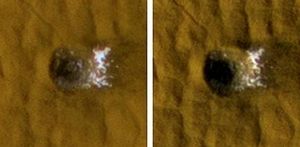
© NASA/JPL-Caltech/University of Arizona
Earlier
and later HiRISE images of a fresh meteorite crater 12 meters, or 40
feet, across located within Arcadia Planitia on Mars show how water ice
excavated at the crater faded with time. The images, each 35 meters, or
115 feet across, were taken in November 2008 and January 2009.
Earlier
and later HiRISE images of a fresh meteorite crater 12 meters, or 40
feet, across located within Arcadia Planitia on Mars show how water ice
excavated at the crater faded with time. The images, each 35 meters, or
115 feet across, were taken in November 2008 and January 2009.
NASA's
Mars Reconnaissance Orbiter has revealed frozen water hiding just below
the surface of mid-latitude Mars. The spacecraft's observations were
obtained from orbit after meteorites excavated fresh craters on the Red
Planet.
Scientists controlling instruments on the orbiter found bright
ice exposed at five Martian sites with new craters that range in depth
from approximately half a meter to 2.5 meters (1.5 feet to 8 feet). The
craters did not exist in earlier images of the same sites. Some of the
craters show a thin layer of bright ice atop darker underlying
material. The bright patches darkened in the weeks following initial
observations, as the freshly exposed ice vaporized into the thin
Martian atmosphere. One of the new craters had a bright patch of
material large enough for one of the orbiter's instruments to confirm
it is water-ice.
The finds indicate water-ice occurs beneath Mars'
surface halfway between the north pole and the equator, a lower
latitude than expected in the Martian climate.
"This ice is a relic of a more humid climate from perhaps just
several thousand years ago," said Shane Byrne of the University of
Arizona, Tucson.
Byrne is a member of the team operating the orbiter's High
Resolution Imaging Science Experiment, or HiRISE camera, which captured
the unprecedented images. Byrne and 17 co-authors report the findings
in the Sept. 25 edition of the journal Science.
"We now know we can use new impact sites as probes to look for
ice in the shallow subsurface," said Megan Kennedy of Malin Space
Science Systems in San Diego, a co-author of the paper and member of
the team operating the orbiter's Context Camera.
During a typical week, the Context Camera returns more than
200 images of Mars that cover a total area greater than California. The
camera team examines each image, sometimes finding dark spots that
fresh, small craters make in terrain covered with dust. Checking
earlier photos of the same areas can confirm a feature is new. The team
has found more than 100 fresh impact sites, mostly closer to the
equator than the ones that revealed ice.
An image from the camera on Aug. 10, 2008, showed apparent
cratering that occurred after an image of the same ground was taken 67
days earlier. The opportunity to study such a fresh impact site
prompted a look by the orbiter's higher resolution camera on Sept. 12,
2009, confirming a cluster of small craters.
"Something unusual jumped out," Byrne said. "We observed
bright material at the bottoms of the craters with a very distinct
color. It looked a lot like ice."
The bright material at that site did not cover enough area for
a spectrometer instrument on the orbiter to determine its composition.
However, a Sept. 18, 2008, image of a different mid-latitude site
showed a crater that had not existed eight months earlier. This crater
had a larger area of bright material.
"We were excited about it, so we did a quick-turnaround
observation," said co-author Kim Seelos of Johns Hopkins University
Applied Physics Laboratory in Laurel, Md. "Everyone thought it was
water-ice, but it was important to get the spectrum for confirmation."
Mars Reconnaissance Orbiter Project Scientist Rich Zurek, of
NASA's Jet Propulsion Laboratory, Pasadena, Calif., said, "This mission
is designed to facilitate coordination and quick response by the
science teams. That makes it possible to detect and understand rapidly
changing features."
The ice exposed by fresh impacts suggests that NASA's Viking
Lander 2, digging into mid-latitude Mars in 1976, might have struck ice
if it had dug 10 centimeters (4 inches) deeper. The Viking 2 mission,
which consisted of an orbiter and a lander, launched in September 1975
and became one of the first two space probes to land successfully on
the Martian surface. The Viking 1 and 2 landers characterized the
structure and composition of the atmosphere and surface. They also
conducted on-the-spot biological tests for life on another planet.
David Shiga
New Scientist
Thu, 24 Sep 2009 11:46 EDT
It looks inconsequential enough, the faint little spot moving leisurely
across the sky. The mountain-top telescope that just detected it is
taking it very seriously, though. It is an asteroid, one never seen
before. Rapid-survey telescopes discover thousands of asteroids every
year, but there's something very particular about this one. The
telescope's software decides to wake several human astronomers with a
text message they hoped they would never receive. The asteroid is on a
collision course with Earth. It is the size of a skyscraper and it's
big enough to raze a city to the ground. Oh, and it will be here in
three days.
Far-fetched it might seem, but this scenario is all too plausible.
Certainly it is realistic enough that the US air force recently brought
together scientists, military officers and emergency-response officials
for the first time to assess the nation's ability to cope, should it
come to pass.
They were asked to imagine how their respective organisations
would respond to a mythical asteroid called Innoculatus striking the
Earth after just three days' warning. The asteroid consisted of two
parts: a pile of rubble 270 metres across which was destined to splash
down in the Atlantic Ocean off the west coast of Africa, and a
50-metre-wide rock heading, in true Hollywood style, directly for
Washington DC.
The exercise, which took place in December 2008, exposed the
chilling dangers asteroids pose. Not only is there no plan for what to
do when an asteroid hits, but our early-warning systems - which could
make the difference between life and death - are woefully inadequate.
The meeting provided just the wake-up call organiser Peter Garreston
had hoped to create. He has long been concerned about the threat of an
impact. "As a taxpayer, I would appreciate my air force taking a look
at something that would be certainly as bad as nuclear terrorism in a
city, and potentially a civilisation-ending event," he says.
The latest space rock to put the frighteners on us was 2008
TC3. This car-sized object exploded in the atmosphere over Sudan in
October last year. A telescope first spotted it just 20 hours before
impact - at a distance of 500,000 kilometres - and astronomers say we
were lucky to get any warning at all.
Thankfully, 2008 TC3 was far too small to do any damage on the
ground, but we are nearly as blind to objects big enough to do serious
harm. We have barely begun to track down the millions of
skyscraper-sized asteroids zipping around Earth's neighbourhood, any
one of which could unleash as much destructive power as a nuclear bomb
on impact.
Asteroid impacts are not as rare as you might think. It is
widely accepted that an asteroid or comet 30 to 50 metres across
exploded over Tunguska in Siberia in 1908, flattening trees for dozens
of kilometres all around. The chance of a similar impact is about 1 in
500 each year (Nature, vol 453, p 1178). Put another way, that's a 10 per cent chance of an impact in the next 50 years (see Should we panic?).
"Fifty-metre asteroids scare me to death," says Timothy Spahr, director
of the Minor Planet Center in Cambridge, Massachusetts. "I could easily see a 50-metre object hitting in three days causing absolute pandemonium."
During the US air force planning exercise, the participating scientists
explained that with so little warning there would be no hope of
preventing an impact. Even Innoculatus's smaller 50-metre asteroid
would weigh hundreds of thousands of tonnes, requiring an enormous push
to change its trajectory appreciably - so much so that detonating a
nuke near it in space would not provide a sufficient impulse so late in
the game to cause a miss. To deflect an asteroid sufficiently, force
would need to be applied years in advance (see Could we nuke it?).
In fact, it could make things worse by breaking the asteroid into
pieces, some of which could be large enough to do damage, and even
create a blizzard of meteors that would destroy satellites in Earth
orbit.
Panic on the streets
Realistically, though, the nuclear option would not be on the
table in the first place: the nuclear-tipped missiles sitting patiently
in silos around the world are not designed to track and home in on an
asteroid or even survive for more than a few minutes in space. Instead,
we would simply have to brace ourselves for the impact.
The good news is that even a little warning makes a big
difference, simply because it would allow us to predict the time and
location of impact. In the case of 2008 TC3, just a few hours after the
asteroid's discovery, NASA scientists completed calculations that
predicted an atmospheric plunge over an unpopulated desert area of
northern Sudan, with timing accurate to within a minute.
But participants in the planning exercise worried that if an
asteroid posing an imminent threat to a populated area were discovered,
and the situation were not handled properly, panic and lack of
coordination could lead to chaos on the roads.
Spahr was not involved in the exercise, but shares those
concerns. "With a three-day warning, you can walk away and be safe. But
it scares me, given how poorly we've handled things of this nature in
the past," he says, citing the failure to fully evacuate New Orleans
ahead of hurricane Katrina in 2005. "I'm picturing people panicking and
driving the wrong way on the freeway, screaming 'Oh my god, it's going
to kill us!'"
To prevent panic and disorganised movement, it is crucial for
authorities to develop an evacuation plan and communicate it to the
public as soon as possible after discovery of the dangerous object,
since such discoveries are posted automatically online and would cause
a media firestorm.
Such measures should ensure the streets would be very quiet as
an object such as Innoculatus plunges into the atmosphere and makes its
final approach to Washington DC. The compression of the atmosphere in
front of the asteroid and friction with the air would cause rapid
heating. At lower altitudes, where the air is denser, the heating
becomes so intense that the asteroid vaporises and explodes. For the
Tunguska event, this happened at about 8 kilometres above ground.
Supersonic shock wave
If you were unfortunate enough to be looking up from directly
below, the explosion would be brighter than the sun. The visible and
infrared radiation would be strong enough to make anything flammable
ignite, says Mark Boslough of Sandia National Laboratory in Livermore,
California. "It's like being in a broiler oven," he says. Anyone
directly exposed would quickly be very badly burned.
Even before the sound of the blast reaches you, your body
would be smashed by a devastating supersonic shock wave as the
explosion creates a bubble of high-pressure air that expands faster
than the speed of sound. Planetary scientist Jay Melosh of Purdue
University in New York once experienced a shock wave from an experiment
that exploded 500 tonnes of TNT, a tiny blast in comparison with the
blast from an asteroid. "I was standing on top of a hill about 1.5
kilometres away wearing earplugs," he recalls. Melosh says you would
see the shockwave in the air due to the way it refracts light. "It's a
shimmering bubble," he says. "It spreads out in complete silence until
it reaches you, then you hear a double boom."
Melosh was at a safe distance, but at ground zero below an
exploding asteroid, the shock wave would be powerful enough to knock
down buildings. It would arrive about 30 seconds after the blazing hot
flash of light, and could also knock any nearby planes out of the sky,
Boslough says. Any surviving buildings would be pummelled by raging
winds blowing faster than any hurricane can muster.
Of course, two-thirds of Earth's surface is ocean. While our
atmosphere is likely to protect us from asteroids smaller than 100
metres across, anything larger hitting the ocean - including chunks of
Innoculatus's rubble pile - would cause a giant splash that could smash
coastal buildings with high-speed volleys of water. The tremendous
damage and loss of life that would ensue if multiple cities around an
ocean basin were flooded led NASA scientists in 2003 to rate ocean
impacts by asteroids as far more dangerous than those on or over land.
Recent computer simulations offer some hope, though. They
suggest that the monster waves generated by ocean impacts would
typically break far from shore, dissipating most of their energy before
they could reach cities - unless the impact was very close to the
coast, of course. Another ray of hope is that 100-metre asteroids hit
Earth only about one-tenth as often as 30-metre objects.
Lasting just one day, the 2008 US air force exercise could
barely scratch the surface of the incoming-asteroid problem. Not
surprisingly, it discovered that should the nightmare come true, there
is no plan for how to coordinate the activities of NASA, emergency
planners, the US military and other parts of government. Further
planning exercises are needed: the time saved through early preparation
will be crucial if an evacuation is ever required at short notice.
Our chance of having any prior warning at all for an
approaching 30-metre asteroid is no better than 25 to 35 per cent with
existing sky surveillance, calculates astronomer Alan Harris of the
Space Science Institute in Boulder, Colorado. The
sun washes out half of the sky with daylight, blinding us to 50 per
cent of threatening objects. Even glare from the moon can hide
unwelcome incoming guests.
What's more, two of the world's three leading asteroid surveys are
based in Arizona, including the Catalina Sky Survey, which discovered
2008 TC3. The region tends to cloud over between July and September.
"Shift 2008 TC3 back to July and forget it. It wouldn't have been
seen," says Spahr.
Now picture this ugly scenario, which worried some
participants in the air force exercise: an asteroid flies out of
nowhere and explodes over a sensitive nuclear-armed region, like
South-East Asia or the Middle East. There's a reasonable chance that
such an airburst could be misinterpreted as a nuclear attack. Both
produce a bright flash, a blast wave and raging winds.
Such concerns were one reason why, when NASA found 2008 TC3 in
its sights, it not only issued a press release but also alerted the US
State Department, military commanders, and White House officials, says
Lindley Johnson at NASA headquarters, who oversees the agency's work on
near-Earth objects. "If it had been going down in the middle of the
Pacific somewhere, we probably would not have worried too much more
about it, but since it was [going to be] on land and near the Middle
East, we did our full alerting," he says.
There is one major way to improve our prospects - point more
eyes at the skies. The European Space Agency wants to get into the
monitoring game and may set its telescopes at the European Southern
Observatory in Chile on the problem. This could fill a gap in the
NASA-funded surveys, which are limited to watching the skies of the
northern hemisphere, says Richard Crowther of the UK's Science and
Technology Facilities Council, who is a consultant for ESA and heads a
United Nations working group on near-Earth objects.
Be prepared
"Up to now, the US has taken the majority of the responsibility
for dealing with this issue and I think it's time for other states to
take on a more equitable share of that," he says.
Help will also come from two new US observatories designed to
survey the entire sky visible from their locations every few days. The
Panoramic Survey Telescope and Rapid Response System (Pan-STARRS), will
consist of four 1.8-metre telescopes, the first of which is already up
and running in Hawaii. Plans are afoot to construct the 8.4-metre Large
Synoptic Survey Telescope in Chile by 2015, though the project is still
raising funds. These will improve the chances of an early detection and
potentially extend warning times for 30-metre objects to more than a
month. But even so, every ground-based lookout suffers from
interference from the sun and moon.
A dedicated space telescope would fix this problem, but such a
mission could cost more than a billion dollars. "We're talking about
investing in an insurance policy," says Irwin Shapiro of the
Harvard-Smithsonian Center for Astrophysics in Cambridge,
Massachusetts.
Shapiro is leading a US National Research Council panel that
by year's end will recommend a strategy to better address the threat
from near-Earth objects. That study, along with the air force's report
on its asteroid impact exercise, is intended to help the White House
develop an official policy on the near-Earth object hazard by October
2010, which Congress has requested.
While asteroid impacts are much rarer than hurricanes and
earthquakes, they have the potential to do much greater damage, Johnson
warns: "It's not something I think there needs to be billions of
dollars per year spent on, but it does warrant some priority in the
list of things that we ought to be worried about." The cash would at
least give us a better idea of when the next asteroid might strike. "From what we know today," he says, "it could be next week."
Comment: For a more in-depth study, read Meteorites, Asteroids, and Comets: Damages, Disasters, Injuries, Deaths, and Very Close Calls
Yesterday afternoon the inhabitants of Mendoza, La Pampa, San Luis,
and Cordoba saw a meteorite coming down the sky. It finally
desintegrated with a loud explosion before it hit the earth.
The object, which initially scared the residents, was seen
yesterday in the General Alvear Department. It could be a meteorite or
space junk, but the place where it fell isn't known, according to what
the Copernicus Institute said today.
From 18.30 there was a cloud in the sky and the explosion was
felt almost by all people, asaid Julio Alcaraz, police officer of Santa
Isabel, a town located 320 kilometers west of Santa Rosa and 40 miles
south of the border with Mendoza.
The chief of the Copernicus Institute, Jaime Garcia, said that
"by the color, it would apparently be a meteorite." He added that "the
meteorite's location is unknown but according to the information
collected it wouldn't have landed on Mendoza".
He defined meteorite as "any space object that wanders among the planets, the stars, and that enters the atmosphere.
"It was like a fireball," commented several neighbors to a local radio
last night. Some Pampean residents said they photographed it and sent
to it to the local media. In fact what is seen is a trail in the sky.
The object fell in the middle of the field in an area of
300,000 hectares which is uninhabited. The risks of fire outbrakes was
immediately ruled out as it had been snowing all day long and it was
very humid.
The Civil Defense chief of the commune, Roberto Trigues,
confirmed that the raking "was held from 20 up to 23hs. They could
establish the hypothetical triangulation with the apex at Punta del
Agua, Agua Escondida and Chocico or Santa Isabel, a little more to the
South, which would be the impact zone.
This explosion is produced before hitting the earth and
logically, as it is an important explosion, it produces a blast of air
which causes the shaking of glasses in the houses.
Finally, Trigues said that this is a very large area, so "I would say it might be hard to find something".
Jaime Garcia, amateur astronomer in charge of the Copernicus
Institute in San Rafael, said "nothing can be confirmed until an object
is found, but we can say that according to testimonies, it is very
likely to be a metal object such as a meteor."
A Bosbury man who witnessed a strange light in the sky on Saturday night is wondering if anyone else saw the same thing.
Mark Beard saw the orange glow at around 9.45pm to 10pm as he was standing outside his rural home.
He said: "I was at my back door looking east, and to my left, appearing
above the tops of houses was a large fireball, a tenth the size of the
moon."
He said it was orange and moved through the sky for about two
or three minutes in a north-south direction. It then slowly started to
fade and then disappear, fading out before it had reached the horizon
in the south.
He said he had found news reports on the Internet of
similar object being seen in Essex at about the same time on the same
night.
"I've seen shooting stars and it didn't have the trail you see with them, but it was very, very bright," he said.
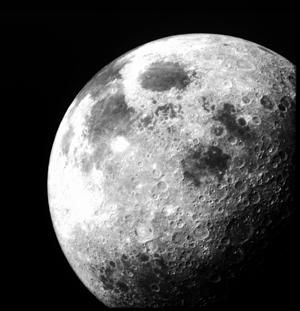


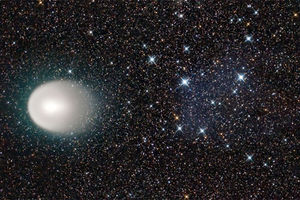
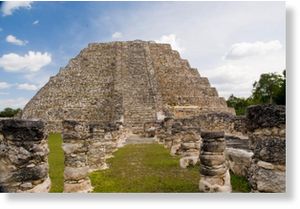
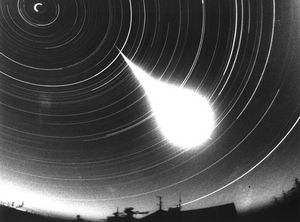
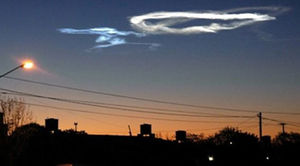
3 comments:
On my way to work this am @414 central standard,about 15 miles north of St.Paul,MN (09/08/09) I noticed a trail several miles long in the sky, then a fiery ball entering our atmosphere;then it darkened but could be seen for just a moment.It was observed @ aprx. 60 deg.off the horizon, facing due south on I-35. Does anyone know of what this was,possibly?
I live on Mt. Hood in Oregon. At 2:57 am PST on Thursday, September24,2009 I saw what had to be a meteor. I was facing east and it appeared large and glowing in the sky it had a bright white fireball with a white. blue and green streaking tail on the underside and a small brilliant red streak. It was amazing!
I wish I could have seen the one over Guelph, Ontario on September 25th. It sounded huge.
I saw two fireballs over London, Ontario back in 2001. It was amazing. One was actually accompanied by sound, a low roar/hiss like water rushing over a dam.
Now I live out in the middle of nowhere with no light pollution, and can't wait until I get to see another one in its full glory :)
Post a Comment